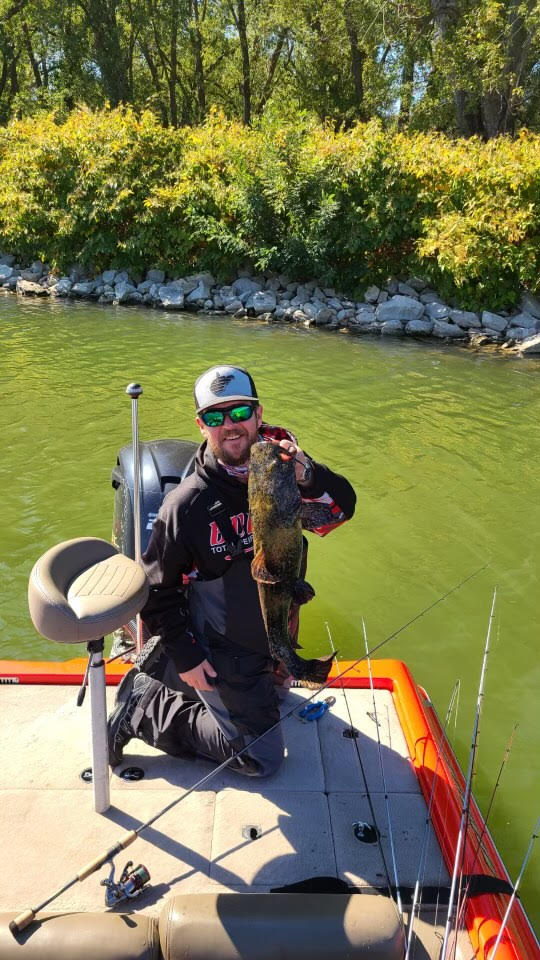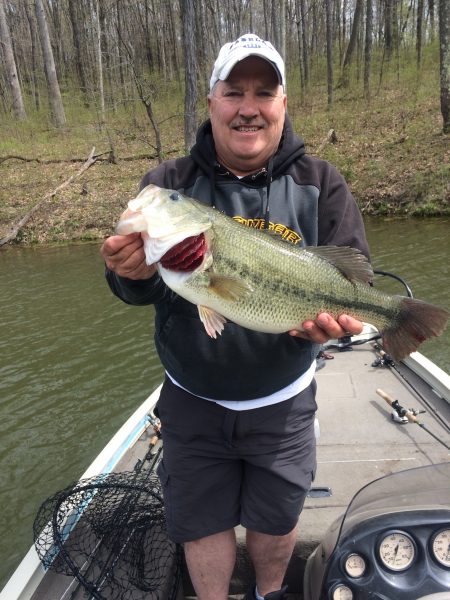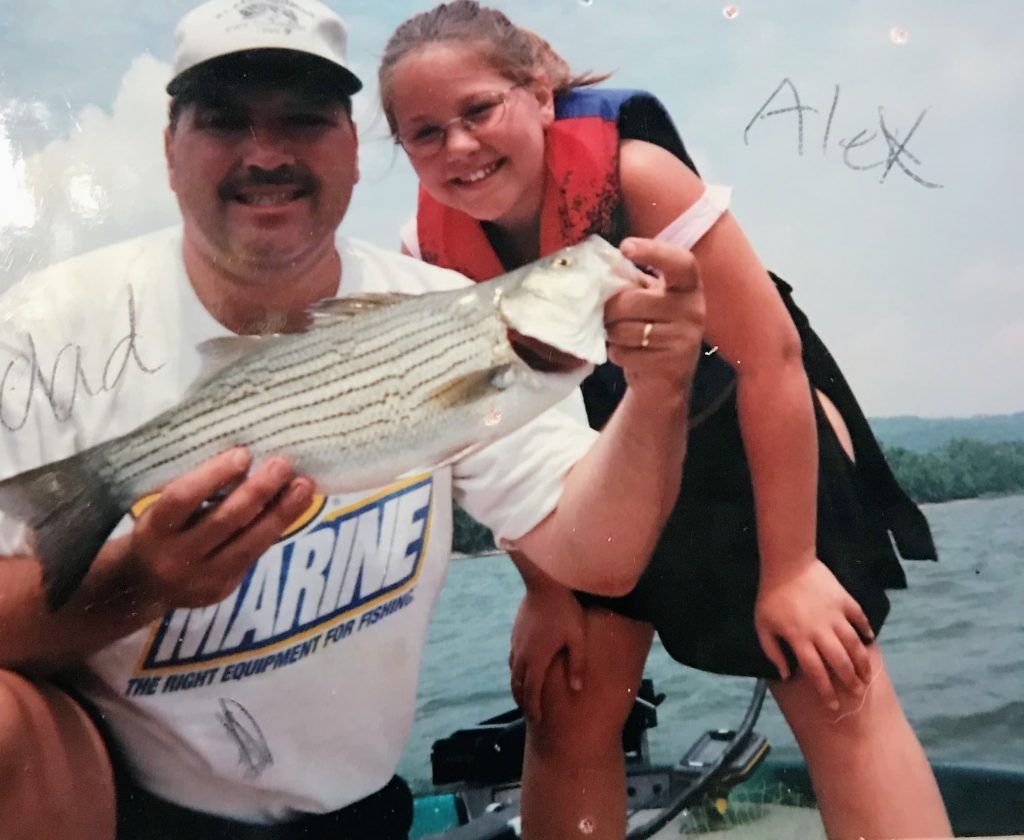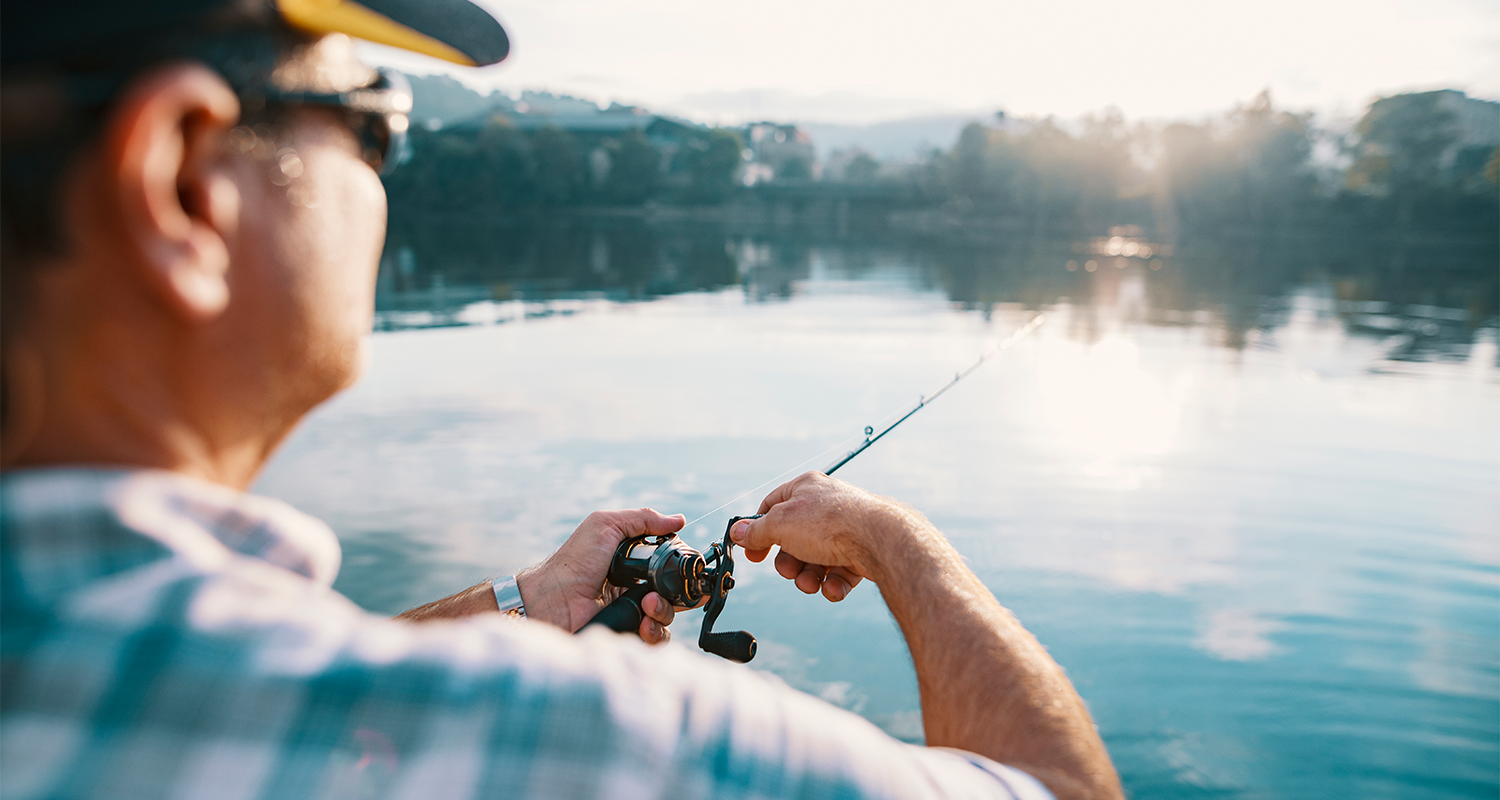If you want to know the best places to wet a line and reel in some big fish in the Wheeling area, ask the local experts. It’s no surprise that the Ohio River is an attractive spot to cast a line, but more specifically, several fishermen have found luck fishing the trail waters of the Pike Island Dam. I spoke with some local fishermen to learn more about their favorite fishing spots and get some tips for folks who are interested in picking up a new hobby this spring.
Local fisherman Cory Oszus spends his time cruising up and down the river by boat. “You’re limitless on how far you can go on the river,” says Oszus. “It’s 900+ miles long with two shorelines. You’re only limited by how much fuel you can carry. There are times I run from St. Mary’s to East Liverpool and back just to fish one tournament. It’s a long trip but when you’re fishing for $25,000 that’s what you’re going to do.”
“In Wheeling proper, definitely start on the river,” said Wes Streblo, another longtime fisherman. Like Oszus, Streblo suggests that anglers new to the sport start by fishing near the dam. “There’s a lot of nice places for people to pull off where you don’t have to get dirty and walk through weeds or grass. It’s all concrete and you can just sit there along the dam and fish. It’s probably one of the best spots to fish.”

While it’s easy to be overwhelmed by all of the bells and whistles of high-end fishing boats and equipment, those who are new to fishing need not worry. You can outfit yourself simply and cheaply and still reel in some keepers. The most common fish you can catch on the Ohio River include striped bass, smallmouth bass, sauger, walleye, white bass, spotted bass, as well as channel and flathead catfish.
Scott Panas, a former West Virginia bass fishing champion and longtime salesperson for Cabela’s fishing department, shares what he believes are the essentials for new fisherpeople. “A spinning rod with an 8 lb. line will get you anything you want around here with some simple tackle.” His biggest piece of advice: “Don’t overthink what you’re doing. Fish will bite what they find attractive.”

Oszust agrees. “For smallmouth trout and walleye, you can’t go wrong with a spinning rod and reel. You can pick those up at Cabela’s or Walmart for $25 bucks and you’re ready to enjoy yourself. For those just getting started, use a spinnerbait. You just cast and wind.”
Orville Blackmore, Jr., longtime president of the Mound City Bassmasters, cautions anglers to make sure they have the appropriate spinning gear. “You want a reel that is balanced to your rod. It’s going to be easier on your wrists after several hundred to perhaps a thousand casts per day. It becomes critical to your comfort.”
David Wellman, Jr. is the fisheries biologist for the West Virginia Department of Natural Resources District 1. He too cites the river as the number one destination but reminds people that management of the fisheries plays a role in its success also.
“The Wheeling area offers ample fishing opportunities for multiple species, but the largest water body with the most access in the area is the Ohio River,” said Wellman.
“The dams typically provide very good fishing access, especially Pike Island and Hannibal in New Martinsville. Shoreline fishing is the most convenient way to fish the tailwaters because of boating restriction zones created by the U.S. Army Corps of Engineers for public safety purposes. During periods of low flow, the Pike Island tailwater access (concrete ramp) can offer some wading opportunities as well.”
The WVDNR works with several other states along the Ohio River to ensure proper management of specific species which struggle to maintain a natural breeding cycle.
“Walleye and sauger spawn in late March or early April, often during times of high water flow, which makes their success highly variable from year to year. Because of this, we annually stock Walleye in the river,” said Wellman. “After a few years of research and coordination with other jurisdictions, a new regulation to minimize harvest and help rebound sauger abundance was put into effect in 2020.”
Because of their slow but lengthy growth period, as well as the increase in fishing interest in the flathead species, the WVDNR has also regulated their catch. “A special regulation of four flatheads per day with only one 35 inches or longer was enacted to minimize harvest of the larger, older individuals. This maintains the current large size structure that Ohio River flathead catfish are known for and provides continued opportunities to catch truly large fish.”
Trout, bluegill, crappie and smallmouth bass anglers have a variety of options as well. They can fish any of the tributaries of the river such as Buffalo Creek in Brooke County, Wheeling Creek in Ohio County and Kings Creek in Hancock County. Harvest can be achieved via bank fishing, wading or kayaking (check for limited access signage on some of the creeks due to current bridge construction projects). WVDNR stocks these species numerous times early in the season.
Other options for these species include the small lakes/dams such as Castleman Lake in Ohio County, Tomlinson Run Lake in Hancock County, and Dunkard Fork Lake in Marshall County.
Some of the aforementioned species will also enter these streams for spawning purposes at various times of the year. “These are great family fishing areas and can even be accessed with small boats with electric motors,” according to Wellman. “We monitor the bass and sunfish populations in these lakes. Tomlinson Run and Dunkard Fork Lake are rated excellent largemouth bass fisheries.”
Tomlinson Run Lake, Castlemans Run, Bear Rocks Lake, Middle Wheeling Creek Lake and Wheeling Creek are a few of the locations selected for the triumphant return of the West Virginia gold rush. What exactly is the gold rush, you ask? Fifty thousand golden trout have been stocked at select locations throughout the state. Of those, 100 will possess a special numbered tag. Anyone catching one of the tagged trout will win one of four grand prizes including the grand prize of a three-night cabin stay at Blackwater Falls State Park.
If you find that traditional fishing is not your thing, or you’re feeling adventurous, you can follow Wes Streblo’s lead and try a little bow fishing. All it requires is a recurve bow, some type of retrieval system, and a nice hot sunny day. Wade into some of the shallow water areas at lakes like Tappan, Clendening or Piedmont, preferably when the water is clear. Look for non-game fish like carp or gar and snap-shoot your target. “People will slow down in their cars or stop and stare,” says Streblo. “They don’t expect to see a guy in the water with a bow.”
Before you hit the water, don’t forget to obtain the proper licensing. You can purchase a seasonal fishing license through the WVDNR’s website, or from one of several retail agent locations, such as Walmart and Cabela’s. The fees collected through licensing help stock our local waterways and protect and preserves our fish population for years to come. Fishing licenses are good for a full calendar year, and there are even lifetime licenses for avid anglers.
You can also take advantage of West Virginia’s free fishing days on June 12 and 13. On these days, no license is required. The WVDNR website provides several helpful resources to help prepare you for a successful fishing season.

Whether you catch a big keeper or nothing at all, fishing is all about spending time outdoors and making memories. “You always remember the first fish you catch,” says Panas. “I’ve fished competitively for decades, but my favorite memories are ones made on the boat with my family.”
• Rich Wooding has been a Correctional Officer with the State of Ohio/Belmont Correctional Institution for more than 25 years. He received a Bachelor’s Degree in Mass Communication and Journalism with a minor in Philosophy from Lock Haven University of Pennsylvania in 1993. He is a U.S. Navy veteran, serving from 1985-89.


